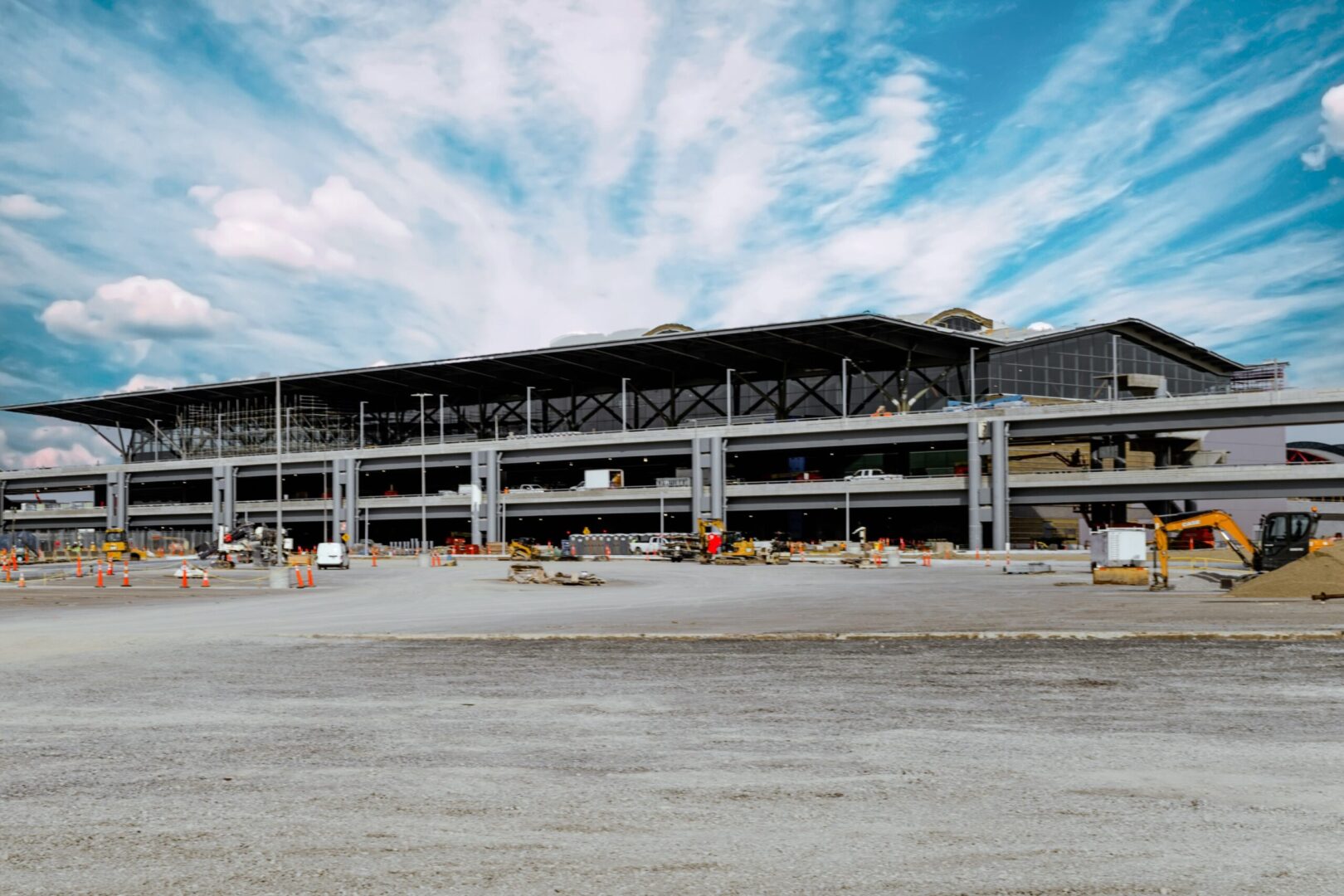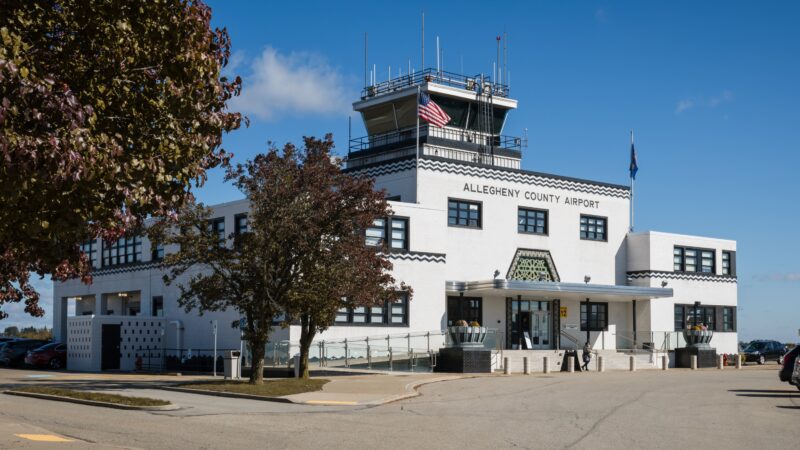How Pittsburgh Helped the Nation Fly
PIT’s state-of-the-art airport, opening in 2025, is shaped by the city’s history of innovation
By Gina Mastrangelo
Published November 25, 2024
Read Time: 4 mins

In 1903, Wilbur and Orville Wright came to Pittsburgh. They had an idea for a heavier-than-air aircraft but needed a cutting-edge solution from The Pittsburgh Reduction Co. – now called Alcoa – to make it work.
“It wouldn’t have been possible without Pittsburgh innovation,” said Andy Masich, president and CEO of the Heinz History Center.
It wasn’t the last time Pittsburgh proved it was a leader in aviation innovation and with the opening of its new terminal next year, is set to make history again.
“If you take a look at the innovation that has come out of this community, it has impacted the whole world,” said Christina Cassotis, CEO of Pittsburgh International Airport. “We intend to see that happen again through the lens of aviation and what we can do for that industry.
“It’s a story about the history, but also the future and where we’re going.”
93 years and counting
November is National Aviation History Month – a time to recognize the industry’s evolution and innovation. Pittsburgh is a pivotal part of that story.
The new PIT marks the latest chapter in the region’s growing influence in the aviation industry that started even before Pittsburgh’s first airport opened its doors.
In 1931, the opening of Allegheny County Airport (AGC) officially cemented Pittsburgh’s prominent role in the industry.
At the time, AGC was the third largest airport in the country. It was a marvel of its time with its art-deco architecture and miles of hard surface runway.
But as demand for air travel increased, the larger planes could no longer be accommodated at AGC. Before it was replaced by Greater Pittsburgh Airport in 1952, nearly 1.2 million passengers had flown through AGC.
As the region’s primary airport, Greater Pittsburgh Airport had the largest terminal in the country. It reflected the best of the region with many innovations that revolutionized the aviation industry. The building even featured escalators, a first for its time.
Thirty years later, things changed again when US Airways made Pittsburgh a hub – sparking the creation of the Greater Pittsburgh International Airport in 1992.
“We had around 21 million passengers,” said Paul Hoback, chief development officer at PIT and a 20-plus year veteran of the airport. “Most of those were just connecting passengers. There were people who never left the airside terminal.”
When US Airways filed for bankruptcy in 2004 and pulled its hub from Pittsburgh, the airport was forced to pivot again and shift its focus to serving its local traveler base.
“It took someone like Christina coming in and saying, ‘Why are you trying to be that hub again? The industry’s gone past that. Let’s just be the best origin-and-destination airport we can be,’” Hoback said.
Informed by the lessons of its past, PIT has expanded its nonstop destinations from 36 to 62 cities both in and outside of the U.S., nearly doubled the number of airlines to 15 and added key West Coast destinations and international service to London on British Airways and Reykjavik on Icelandair.

Allegheny County Airport was the third-largest airport in the country when it opened in 1931. (Photo by Beth Hollerich)
An airport for the future
After 10 years of reinvention, the time came once again to rethink the design of a new terminal.
“Pittsburgh had gone through yet another renaissance with automation, AI, all of the eds and meds that had diversified the economy, and the airport had not kept that pace,” said Cassotis. “When the airport does perform – and I think we’ve shown that we can do that – it’s a real value add.”
The new Pittsburgh International Airport will present an innovative air travel experience catering to Pittsburgh travelers, including becoming the first terminal to feature multiple outdoor terraces both pre- and post-security.
“In one’s airport, wherever you live, you always look at that as an element of yourself,” said Rick Lee, implementation manager at Paslay Group, of the new terminal project. “It represents your city, your region. This is going to change everything for Pittsburgh.”
The new PIT will address issues that arose with the current configuration. There will be 11 TSA checkpoints, an updated baggage system, smart parking garage and larger meter-and-greeter spaces – all designed with the Pittsburgh passenger in mind.
“It will be very clear through the building itself, the services, the design, the intent, how we’re reinventing the passenger experience, and what story we’re telling,” Cassotis said.
More innovations to come
Pittsburgh’s new airport is only the beginning.
“Pittsburgh is a major market, and global aviation, at one point, sort of wrote Pittsburgh off as a high growth or high investment opportunity,” Cassotis said. “It is paying a lot closer attention today through the work we’re doing with not only energy but passenger experience, diversifying our revenue base and really delivering services in a new way.”
This year alone, PIT celebrated several anniversaries, including the first year of its workforce development initiatives. PIT2Work, the airport’s pre-apprenticeship program, has graduated six cohorts of 91 men and women since it launched in summer 2023. PIT’s on-site childcare center also has been open for over a year, helping solve one of the industry’s most pressing challenges.
And PIT was recently awarded for its culture of innovation as one of three winners at Future Travel Experience’s Global Airport Pioneer Award. Deepak Nayyar, PIT’s Executive Vice President and CIO, was named to the FTE Airport Digital Transformation Power List Americas 2024. And PIT was the winner in the Solutions Provider-Innovative Tech category at the recent Tech 50 Awards presented by the Pittsburgh Technology Council.
Additionally, PIT is paving the way for a cleaner, greener future by prioritizing sustainability in the industry. It also continues to contribute to the region’s economy through project’s like Neighborhood 91, the airport’s additive manufacturing campus.
“I believe in aviation,” Cassotis said. “I believe we need it to function well globally. I believe we need to earn its right to grow. I believe that here in Pittsburgh, we can affect the trajectory of aviation.”






